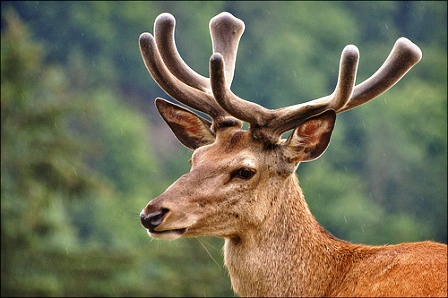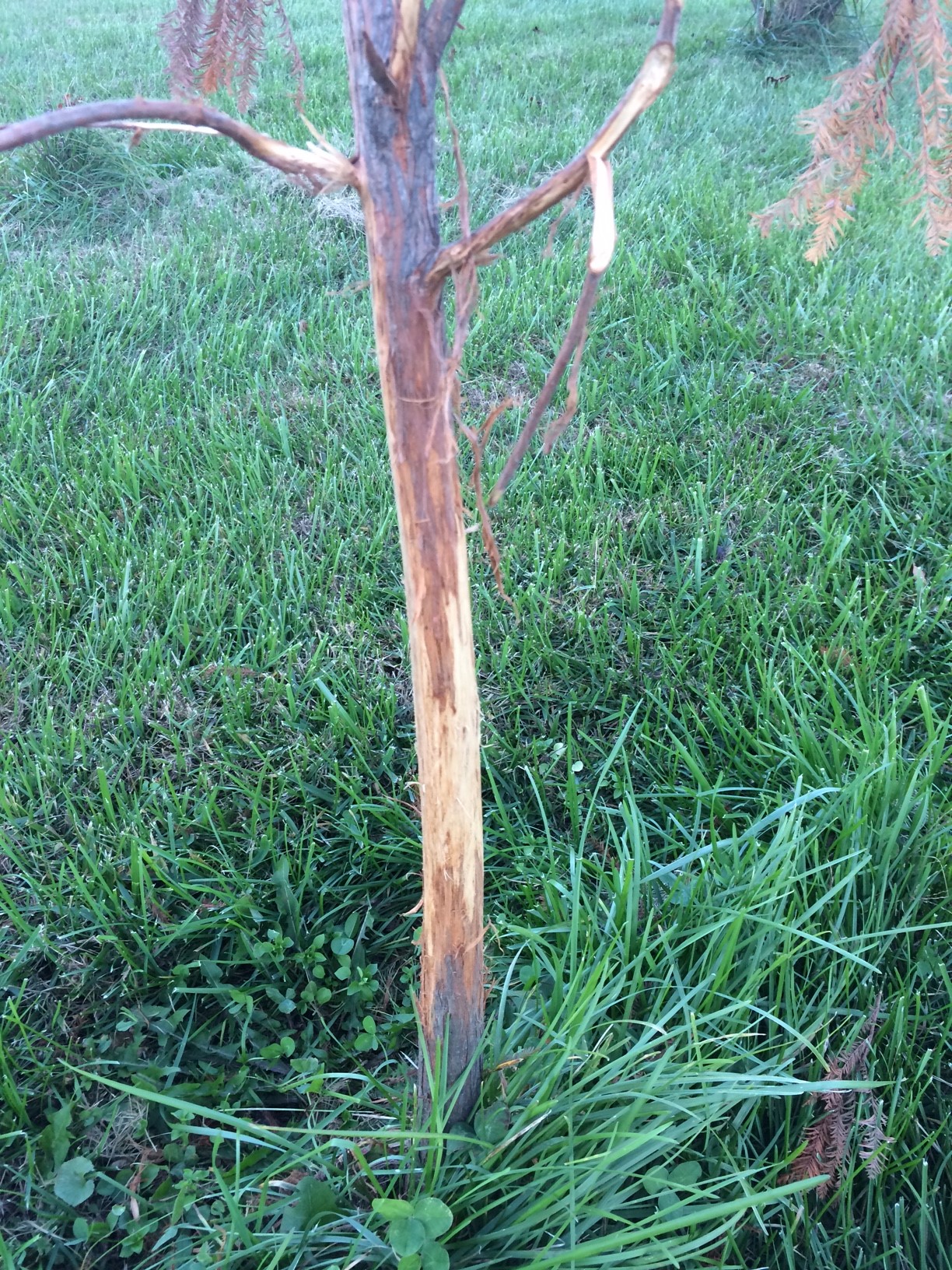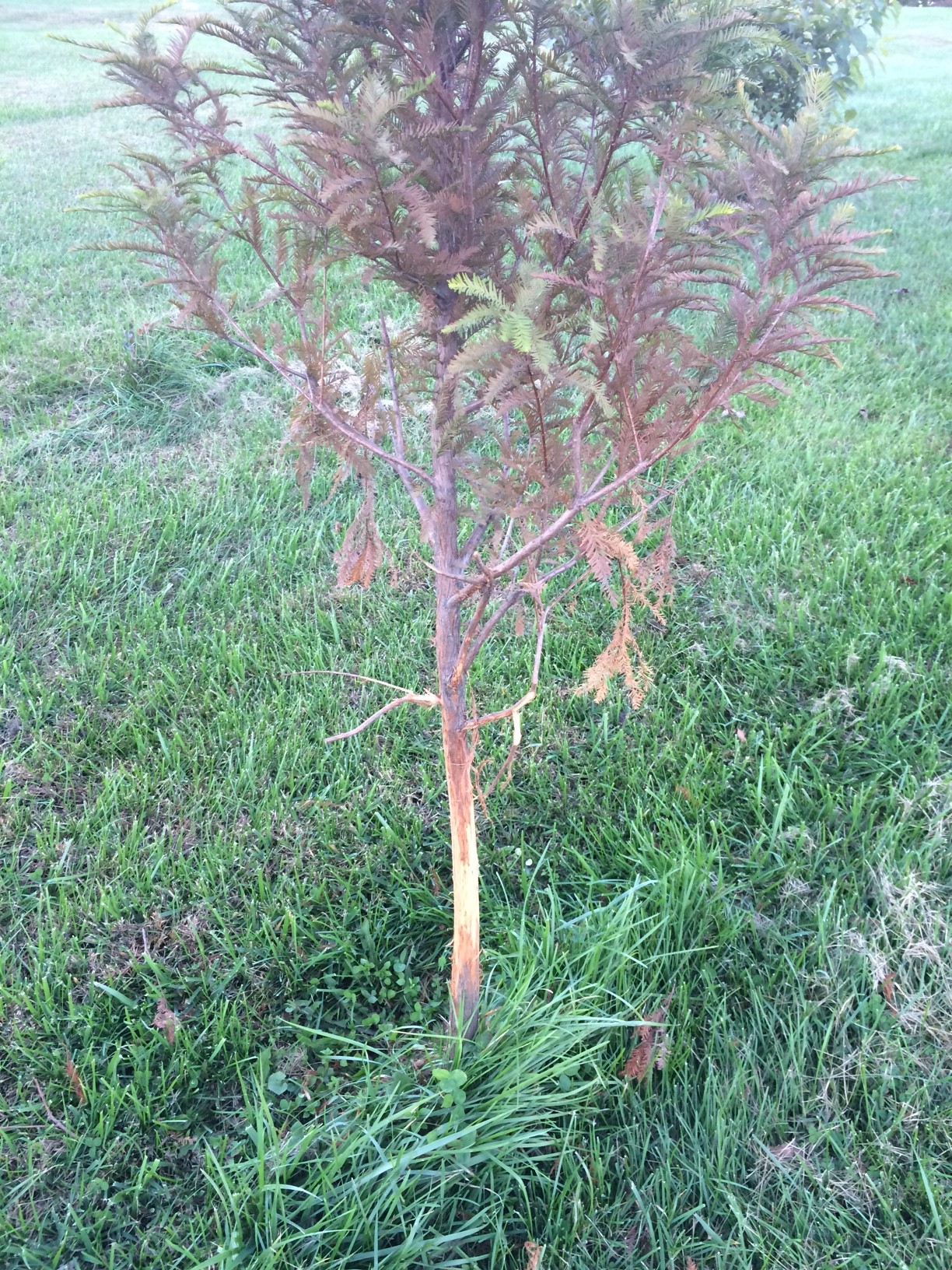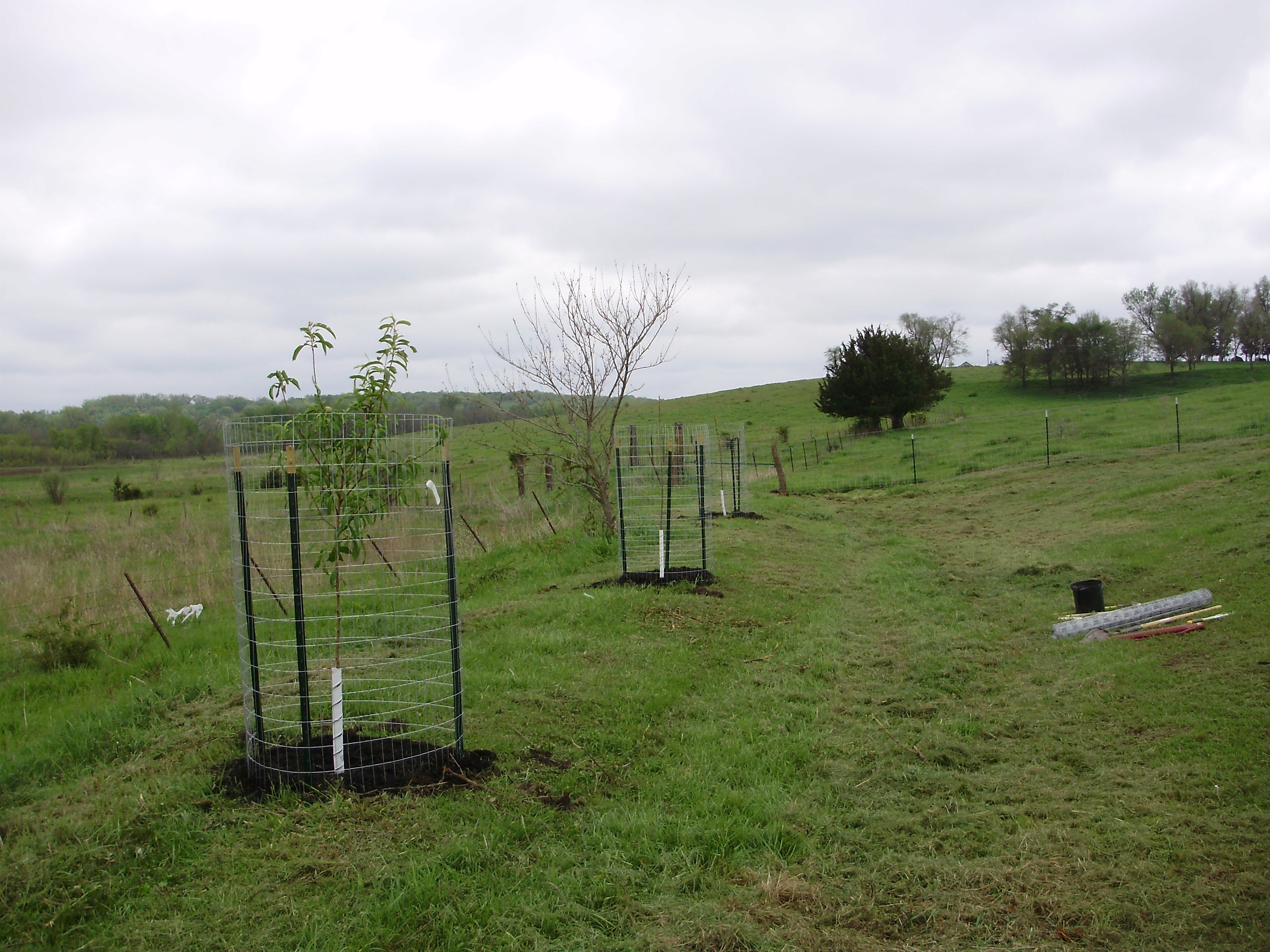You likely spent the spring trying to ensure that your tulips, hostas, and other ornamental plantings were browsed to the ground by to those pesky hoofed creatures called white-tailed deer. A hungry deer will eat about anything, consuming about 4 pounds or more of vegetation in a day.
Now that it’s fall, your landscape should be safe from deer, right? Unfortunately, fall brings with it the deer mating season, referred to as “rutting season”. At this time, the male deer (bucks) are looking to clean the velvet off of their antlers and mark territory. So what better way to do this than to select one of those nice new 1-2 inch caliper (up to 4 inches) trees you planted in the spring. A little rubbing generally won’t hurt the tree, but a lot could mean the end to your tree, especially if they girdle it by removing a ring of bark from around the whole tree. Rubbing usually occurs from 1 to 4 feet above the ground. Deer can also damage trees by thrashing their antlers in the lower branches and breaking them. While this can be unsightly, it is generally easier to deal with than the bark rubbing.
You’ve seen the deer and the damage they’re doing so what do you do now? Fortunately, there are a number of things you can do that will save your landscape. First to address tree damage, trim the loose bark where it is not tightly connected to the trunk. If tree limbs have been broken, prune branches to a strong side shoot or main branch. Steel posts (light gauge steel 4 to 6 feet long) can readily be used to protect individual trees from any further damage. Be sure to set the flared base of the post about 1 foot away and in line with the trunk to minimize root damage when driving it into the ground. Temporary fencing can also be used to provide a barrier. If necessary, trees can be wrapped with plastic trunk wraps, but be sure to monitor tree growth to prevent the tree from being cinched by the wrap when it out grows it.
Deer can significantly damage young trees so it is important to take steps to protect them from rutting bucks and to correctively prune damaged trees. If you have damaged trees, pay attention to these trees the following year as they may be revisited and further damaged.





